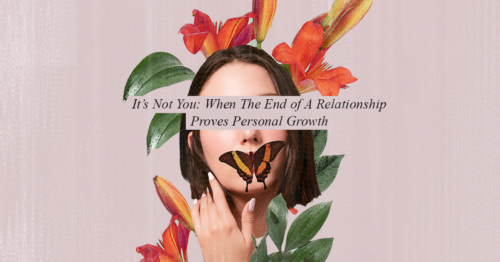Debunking harmful misconceptions about polyamorous couples
“You must never get jealous.”
“You’ll settle one day, just wait.”
“You’re just a commitment-phobe.”
These musings merely touch upon the surface of a polyamorous individual’s laundry list of overheard assumptions. As the outliers to traditional romance trajectories, polyamorous couples, throuples and other unique, poly-forming shapes often fall victim to misconceptions driven by conventional and change-resistant concepts.
While younger generations are more open about the modern sexual spectrum, some aspects of polyamory remain taboo. We asked four polyamorous individuals to bust common myths and share their thoughts on combatting conditioned beliefs to make way for unconventional narratives.
RELATED: Can A Polyamorous Relationship Work? We Hear Straight from These Polyamorous Couples
@campthrouple Sup campers!? ⛺️ Hope you enjoy this silly video of misconceptions we hear about our relationship. #throuple #throuplelove #throuplegoals #lgbtq #fyp #foryoupage #fypage #love #fypシ ♬ original sound – Camp Throuple
Why do people become polyamorous?
People do not become polyamorous for the reasons normative perspectives often assume. According to 28-year-old freelance writer Elle, “I didn't want to limit the beautiful connections I can make just because I was already in a relationship. Also, I have so much love to give, and I also wanted my partner/s to be able to pursue their own romantic relationships outside of [ours].”
According to a recent study by the Archives of Sexual Behaviors, the primary motivating factors behind ethically non-monogamous relationships are autonomy, relationality, changing belief systems, sexuality exploration, growth and pragmatism.
Confirming this theory is 24-year-old fine art nude model Ivy, who believes in polyamory’s “flexibility in navigating relationship dynamics.” For 27-year-old consultant Geo, monogamy “didn’t feel natural.” 32-year-old content manager Danger shares the same sentiment, saying, “[Polyamory] felt like the most natural thing in the world.”
@attn More really can be merrier! #poly #polyamory #relationships ♬ original sound – attn:
A bit of popular myth-busting
When it comes to common poly myths, fear of commitment takes the cake. Society often depicts non-monogamous relationships as a manifestation of existential crises or an inability to “just choose.”
In reality, polyamorous people are just as content, emotionally agile and frustrated as their monogamous counterparts. Ivy believes the key to lessening the divide between these relationship structures lies in education. Education and information dissemination would be the best way to eradicate the divide between monogamous and ethically non-monogamous people. I believe it's easier to accept an idea that you're familiar [with] than something that you only see in popular media.”
With open communication and accessible education channels on social media platforms come a lot of debunking. Our four interviewees share one gripe in common—”That it’s all about sex, sex, sex. All the time,” says Elle.
Contrary to popular belief, Ivy says one of the most glaring myths about polyamory is that, “We get a ton of sex.” Many aspects of polyamory have little to nothing to do with sex. Ivy says, “Some monogamous folks…think that being poly means I would have sex with anyone and everyone. On the other hand, it deters strictly monogamous people from even dating me, which honestly makes weeding out people I wouldn't want to date in the first place [more difficult]…Being ENM becomes so fetishized that people just forget that polyamory is about sharing love, not sex, with multiple people.”
Open vs. poly—what’s the difference?
With new concepts comes new terminology. A lot of poly myth-busting has to do with how people define specific practices. The open vs. poly debate is a prime example of boundary drawing, as incorrectly defining one or the other can lead to consequences.
Let us preface the discussion by saying many of these terms remain relative. When asked how they personally define open vs. poly, Elle responded, “Open relationships are often more about the physical and sexual aspects of things whereas polyamory is more about pursuing actual relationships with multiple people.”
Danger mostly corroborates this definition, saying, “Poly does not have to be open; it can be closed among a group of people. Open means [having a] general freedom to pursue.”
Ultimately, defining what “open” and “poly” means to you is the key to your relationship structure. Are you pursuing exclusively sexual relationships? Is there something more? That’s up to you and your partner (or partners) to decide.
Some myths ARE true…kinda
Whether unsurprisingly or not, some polyamory myths hold true. According to Elle, “Unicorn hunters do exist. 10 years into this, I found that at the start of my relationship, we unintentionally made this mistake. But we learned as we grew and now pursue authentic connections whether that's together or apart.”
Unicorns are typically bisexual “thirds” interested in meeting couples as a one-night stand, long-term partner or anything in between. While there are no hard and fast rules to “unicorn polyamory,” the setup is occasionally controversial for its blatant hierarchy.
While not in themselves a myth, jealousy and patience are typically more present in polyamorous relationships. Ivy says, “You need a lot of patience and understanding to be ENM. There can still be jealousy and envy in ENM partnerships. Practicing it doesn't make us immune to negative feelings towards our paramours or metamours. It does take a lot of communication and comprehension to make the relationship dynamic work.”
YES—we get jealous. Sometimes. It’s natural.
On a lighter note, Danger can confirm these more comical stereotypes. “ADHD. Creatives. They play Dungeons and Dragons and other tabletop RPGs. I experience these all personally as these are also all me.”
In addition, “A lot of polyam peeps dye their hair often.” Fortunately for Geo, his natural hair is where it needs to be. “But I know polyam peeps do it often!”
The Bottom Line
Polyamory is not a myth-rife fad. In fact, it’s older than monogamy. Only through the evolution of family values and societal change did the partner-for-partner concept become ideal.
The general consensus among our four participants is that polyamory—myths and all—have made them more considerate of people’s feelings and aware of their communication styles. The ability to pursue all relationship structures without shame or guilt shouldn’t be novel—that’s the norm we’re after.
Words Zoë Isabela Alcazaren
Art Matthew Ian Fetalver


















